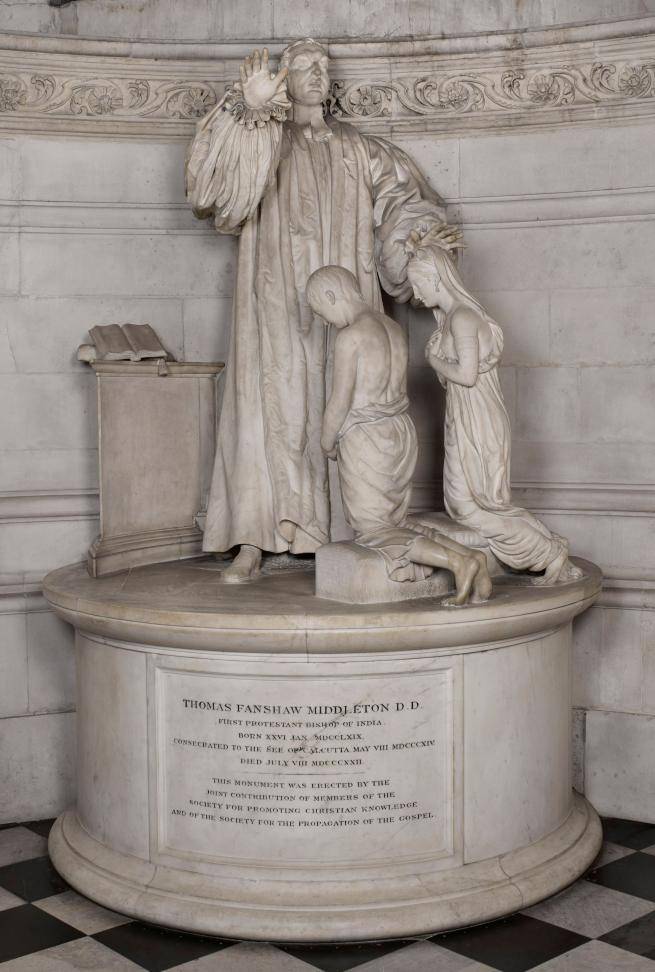Bishop Thomas Fanshaw Middleton (1769-1822): The art

Image courtesy of Pantheons: Sculpture at St Paul's Cathedral.
Bishop Thomas Fanshaw Middleton
1769-1822
The art
This work is part of The East India Company at St Paul’s: A digital trail produced in collaboration with Stepney Community Trust.
Written by Naajia Ahmed, a curator whose practice offers an empathic and inclusive approach to highlight under-represented voices with dignity, and to conserve and protect stories that are at risk of being lost.
The following text is available in Bengali, Gujurati, Urdu, Hindi, Punjabi, and Tamil. Please email CollectionsDepartment@stpaulscathedral.org.uk to request a copy.
![]()

This monument to Thomas Fanshaw Middleton is a valuable example of the contested legacy of the church in India.
Breaking through Middleton’s hands and falling on the backs of the Indian children, a stream of sunlight produced by the large windows behind the figures acts almost as a divine halo. Critically, the sunlight combined with the composition of the figures manufactures a spirituality and, consequently, presents a paternalistic image of Middleton as an anointed and benevolent saviour of India.
The adolescent girl, partially draped and hands crossed over her chest, follows a pattern of European artistry which often depicted Indian women in a way that both exoticised and eroticised them. These images, seen at the Cathedral also in the monument to Charles Cornwallis and Charles Metcalfe MacGregor, often carry a voyeuristic quality, portraying Indian women as young, with large, almond-shaped eyes, exposed in draped or sheer saris. The young girl portrayed here, neither fully exposed nor fully draped, is perhaps intended to suggest that Christianity presents redemption and has a civilising effect.
Continuing to observe this monument with a critical eye, we see the bare-chested boy wearing only a dhoti, with cautiously laced fingers and feet bent in submission – all further examples of an Indian in the process of becoming ‘civilised’.
Middleton himself did not believe that his primary duty was to convert non-Christians in India to Christianity. But the symbolism in the monument is indicative of the attitudes held by the British evangelical lobby at the time and the organisations that commissioned the monument, the Society for Promoting Christian Knowledge (SPCK) and the Society for the Propagation of the Gospel (SPG), who saw it as their sacred duty to bring Christian truth to the ‘heathen’. The image of Middleton as an almost saintly figure with a heavy, authoritative stance, when contrasted with the submissive postures of the young children, speaks to a reality experienced by many South Asians of a deeply unequal and troubling relationship between Britain and India.
For detailed information about this monument, visit the Pantheons: Sculpture at St Paul's Cathedral website.

The East India Company at St Paul's
Explore the full digital trail produced in collaboration with Stepney Community Trust.




